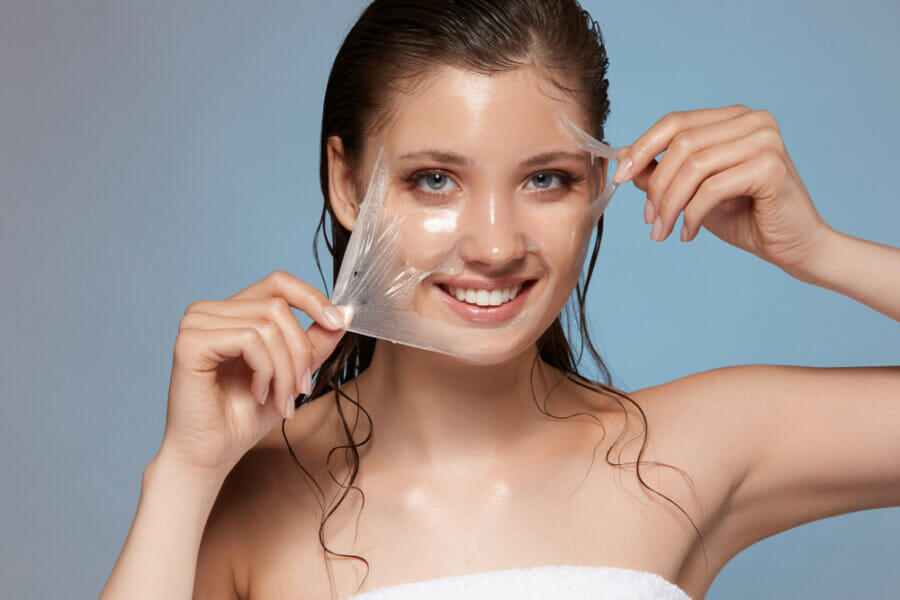Top Gentle Chemical Peels for Sensitive Skin
If you have sensitive skin, the idea of a chemical peel might make you cringe, imagining a red, uncomfortable face. However, when done right, chemical peels can be a safe and effective way to improve your skin without causing irritation. By following the proper guidelines, chemical peels for sensitive skin can leave you with a radiant complexion instead of a raw one.
In its basic form, chemical peels work to rejuvenate the skin’s color, texture, and appearance by addressing issues like hyperpigmentation, fine lines, and overall skin glow. Lara Devgan, MD, a board-certified plastic surgeon in Los Angeles, explains that these peels contain potent exfoliating ingredients that gently remove dead skin cells from the skin’s surface, resulting in smoother and brighter skin.
To address any concerns you may have about using chemical peels on sensitive skin, we’ve consulted with three dermatologists to provide insights on how to incorporate chemical peels into your skincare routine if you are prone to irritation.
Advantages of Chemical Peels
According to dermatologists, chemical peels are most effective in treating challenging skin issues that arise as we age. Rina Allawh, MD, a board-certified dermatologist, explains that chemical peels are commonly used to address acne, hyperpigmentation, and signs of aging like sunspots.
These peels, with their powerful ingredients, can effectively remove dead or dull skin from the skin’s surface, revealing a more even skin tone. They also stimulate cell renewal, bringing healthy new skin cells to the surface to replace the old ones. As we age, it becomes harder to address discoloration or scarring, making potent acids necessary to tackle these stubborn skin concerns.
Key Factors to Consider in Chemical Peels for Sensitive Skin
For individuals with sensitive skin, the idea of using chemical peels can be daunting. While some stronger peels may cause irritation, there are formulations specifically designed for sensitive skin.
Dermatologist Marina Peredo, MD, recommends opting for chemical peels with lactic acid, known for being one of the gentlest alpha-hydroxy acids available. Lactic acid, like other AHAs, aids in removing dead skin cells on the skin’s surface without penetrating too deeply, making it suitable for sensitive skin. On the other hand, glycolic acid, although more potent, has excellent anti-aging benefits, as noted by Dennis Gross, MD, a board-certified dermatologist.
Dr. Allawh advises sensitive skin individuals to avoid chemical peels with botanical ingredients, as some may be irritating and trigger allergic reactions due to their natural fragrances.
Home vs. Professional Chemical Peels
When considering a chemical peel, you can choose between professional, in-office treatments or at-home peels. In-office treatments are tailored to your specific skincare needs by a dermatologist, although they can be more expensive. At-home peels, on the other hand, are milder and require consistent use to achieve results.
The difference lies in the ingredients and potency of the peels, according to Dr. Allawh. In-office peels may contain stronger acids like TCA or glycolic acid, necessitating post-treatment neutralization to prevent skin irritation.
If you’re uncertain, starting with at-home chemical peels is recommended as they are gentler on the skin and allow you to observe how your skin reacts to the ingredients.
Application of At-Home Chemical Peels for Sensitive Skin
Before applying a chemical peel, it’s essential to prep your skin properly. Dr. Allawh suggests cleansing your face with a gentle, hydrating cleanser like CeraVe Hydrating Cleanser. After applying the peel, ensure you moisturize your skin adequately to prevent irritation and redness. Dr. Devgan recommends using a calming, emollient moisturizer to soothe the skin’s barrier and shield it from irritants and environmental factors.
Don’t forget to apply sunscreen, as your skin becomes more sensitive to the sun post-peel, making it more prone to sunburn, which can worsen hyperpigmentation and fine lines.
Recommended Chemical Peels for Sensitive Skin
The Ordinary’s chemical peel contains glycolic, salicylic, and lactic acid, making it suitable for sensitive, acne-prone skin. Dr. Allawh recommends leaving it on for 5-10 minutes, then rinsing gently and following up with a moisturizer.
Purlisse’s Watermelon Polishing Peel is gentle on sensitive skin, containing glycolic acid, aloe, and lactic acid to exfoliate and provide essential vitamins and antioxidants for skin texture improvement and protection.
This peel contains antioxidants and AHAs for a gentle exfoliation that won’t irritate sensitive skin. It removes dead skin cells from the surface, leaving your skin looking brighter.
This multi-acid peel deeply exfoliates the skin with gentle ingredients suitable for easily-irritated skin. The blend of lactic, glycolic, and malic acids removes dead skin cells, promoting cell turnover for plump skin.
Dr. Devgan’s peel combines key exfoliants like hyaluronic acid for hydration, retinol for cell turnover, and bakuchiol for gentler retinol-like effects. It aims for a focused micropeel over 10 days with a blend of brightening ingredients.
With a mix of AHAs and BHAs, this peel from Dr. Dennis Gross provides gentle exfoliation. It uses a 2-step process to prevent irritation, making it a preferred choice for at-home peels. Recently, a sensitive-skin version was launched for a milder application.
 AHA + BHA Mask — $80.00
AHA + BHA Mask — $80.00Drunk Elephant’s mask contains AHAs and BHAs that work together to exfoliate the skin. It removes dead skin cells and unclogs pores effectively. Due to its potency, it’s recommended to use it once a week to avoid irritation.
















